I don’t really want to write anything about Christmas. It’s not a holiday that I have a relationship with, but of course I know that it’s a special time for many others. All over the world, this festival is now celebrated in all religions. So maybe it doesn’t really matter what the origin or meaning of this festival is. And that’s why I’d like to wish you a few happy days with this greeting from Father Christmas in the Australian Outback. But it looks a bit like he and his mate the reindeer have quit their jobs, or better, hung them up on some termite mounds.
Termite mounds
I just thought, you might be interested:
Termites build nests of marvellous perfection that you simply have to admire. Compared to our houses, their mounds are gigantic. Living castles with sophisticated climate technology that makes human engineering seem simply modest. In this protected world, the fragile insects live blindly and communicate with each other by exchanging odours and making tapping noises.


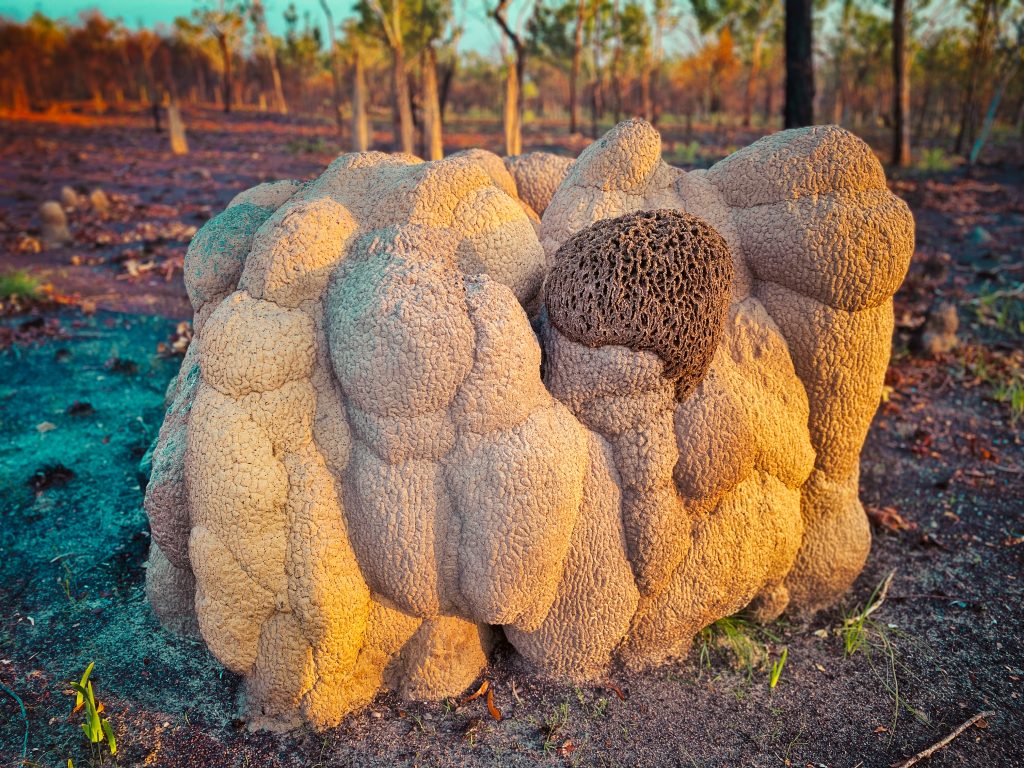
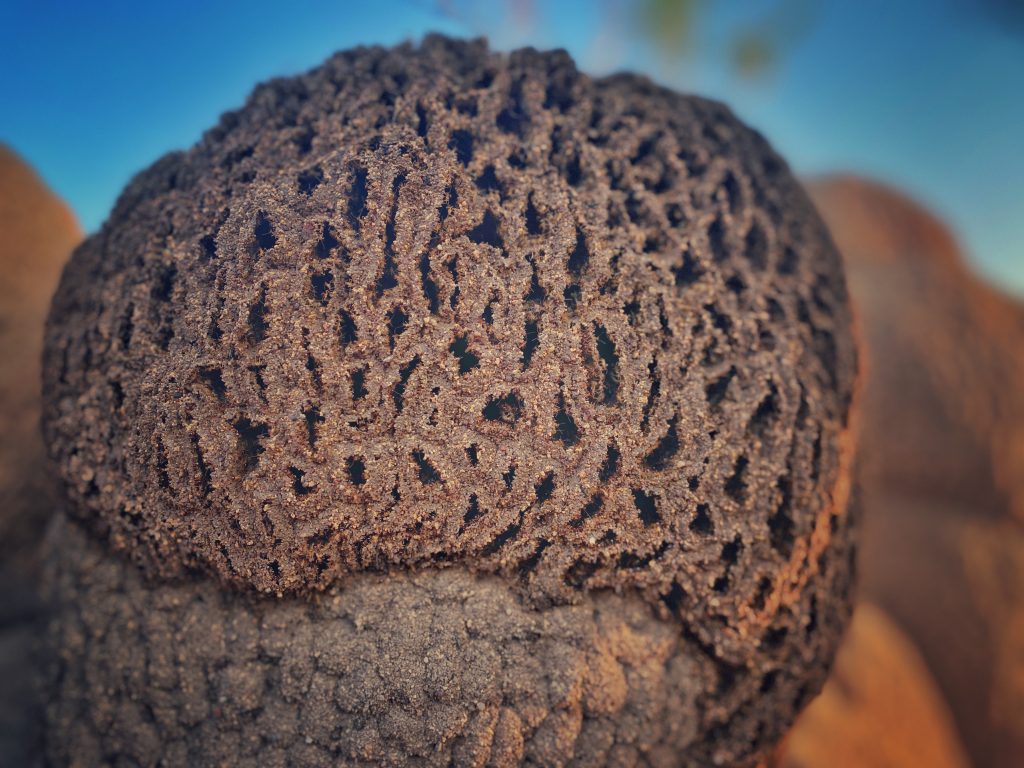
They build their nests out of earth, clay or sand, depending on the area and subsoil. For the wall and floor constructions, the animals use thin cardboard, which they produce from chewed wood and saliva. The interior is divided into several storeys by intermediate floors, which are artfully connected by ramps and small spiral passages. A network of fine pores in the outer walls and a system of air ducts ensure excellent air conditioning and ventilation. The thick outer walls are as hard as cement.
What would a Christmas tree in the outback look like?
Instead of fir trees, there are fantastically fragrant eucalyptus trees and instead of Lametter, there is glittering red dust on the branches on one of these stiflingly hot December days. Even if the heat is merciless on this piece of earth, of course, we are no strangers to heat. For over a year we have had temperatures between 30 and 45 degrees Celsius every day. What is different is that there are no longer any cooling sea breezes or dense, humid jungle, hardly any shady trees or refreshing cold drinks on every street corner.
The air stands still, we cut through it on our push bikes (that’s how Australians call bicycles without electrical support), and it feels like the air is being pressed through every seam of our clothes and through our helmets, pressed against our skin.
And we stop in places like Tennent Creek, where it’s supposed to be dangerous. Again and again we are warned to take good care of our belongings and to lock the bicycles securely. Normally our experience tells us that these warnings are completely exaggerated, but here it is somehow different. Barbed wire fences, police presence and an atmosphere that is hard to describe. A kind of vigilance, as if something bad could happen at any time. So we are also extremely cautious.
Why is it different in this town?
An outback town plagued with killings, violence, suicides and child sexual assaults, is inconspicuously tucked away amid the red, dusty plains and vibrant skies of Central Australia.
Tennant Creek, located about 500km north of Alice Springs in the Northern Territory, is known for its high crime rates and social disorder, fuelled by substance abuse and poverty, for decades.
For such a small city, an “impressive” statistics on violence.
Tennant Creek has a tiny population of just 3080 people, with more than half indigenous. It’s a place where children, not old enough to attend school, are often seen roaming the streets on their lonesome in the early hours of the morning and in the dark of the night. In fact, you can see signs on various shops that they are taking part in a programme, that children who come into these shops during school hours will be handed over to the police.
So why not give up on a village like this?
The answer is pretty easy: A short, violent gold rush around 1930 earned the town the nickname “Heart of Gold”. Today, copper and gold are still mined in the area. Otherwise, the fourth largest town in the Northern Territory lives from its function as a typical Australian supply base for farmers and an important stopover on the Stuart Highway on the way from Alice Springs to Darwin and vice versa.
We didn’t experience any violence ourselves, fortunately. The only thing that left us somewhat speechless was a run-over dog in the middle of the village, which was initially left lying around carelessly. But shortly after we reached the dog, a lady stopped in her car, called a vet and after we had lifted the dog off the road together, she explained to us that the dog would be buried on a pet cemetery. These contrasts are pretty special and there is no Christmas time anymore for this poor dog.
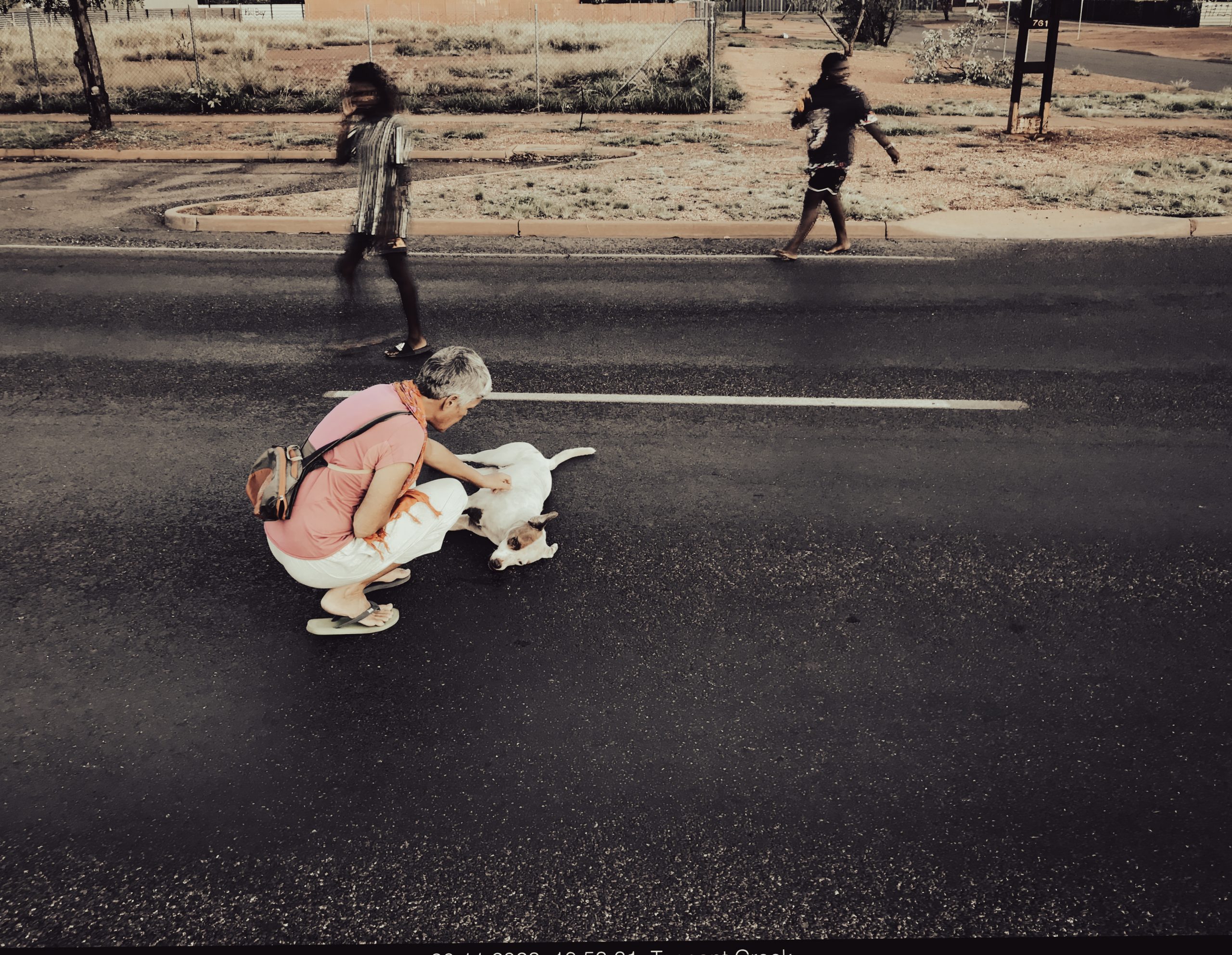
Full moon instead of television

The mobile phone hasn’t received a signal for hours. Also Klaus’ attempt to hold it up in the air doesn’t help.
Instead of television, the evening programme is dominated by the full moon, which illuminates the bush and transforms it into a mystical landscape. Going to bed early in the tent is a guarantee of being up early the next morning, greeting the first morning rays and being “ready for the brekkie”, for breakfast.
Australians have a very special language. As soon as we arrived at Darwin airport, we were asked where we were cycling to and replied “to Brisbane”. The surprised answer “to Brisi”? We had to smile at this form of trivialisation.
Back to the full moon, which is no guarantee for a romantic night
For others, the full moon means nothing romantic, the night rather means death.
The first dead kangaroos we see at the roadside are still a bit creepy.
We have already cycled passing many dead animals on our journey.
However, the high density of dead kangaroos is frightening. Their faces, if they can still be recognised as a whole, are just so heartbreakingly cute. And yet we get used to it again. What we don’t get used to, however, is the sometimes bestial stench of decay. It is not uncommon for this to make us nauseous.
These animals next to the road were certainly mostly dead immediately
What must it have been like for all those who disappeared into the bush seriously injured and died miserably there? I wrote about the reasons for the high number of dead animals in my previous blog post: “Outback, did you have any good rain today?“. There is an emergency call that you can use if you see injured wild animals. But does it actually work everywhere in the Outback? Yes, I’ve got used to the death of all these creatures. But I’ve also developed my own strategy for dealing with it. I smile at them and invite them to “join us”. I have been collecting the “souls” of dead animals this way for the last 20 months on our traveling.
My “imaginary zoo” around me has therefore grown abruptly and expanded to include all the hopping animals, which Momo, my last dog, who died almost 6 years ago, is less than thrilled about. What a commotion, what a mess.
And of course there are other species lying dead by the roadside, such as cows and pigs.

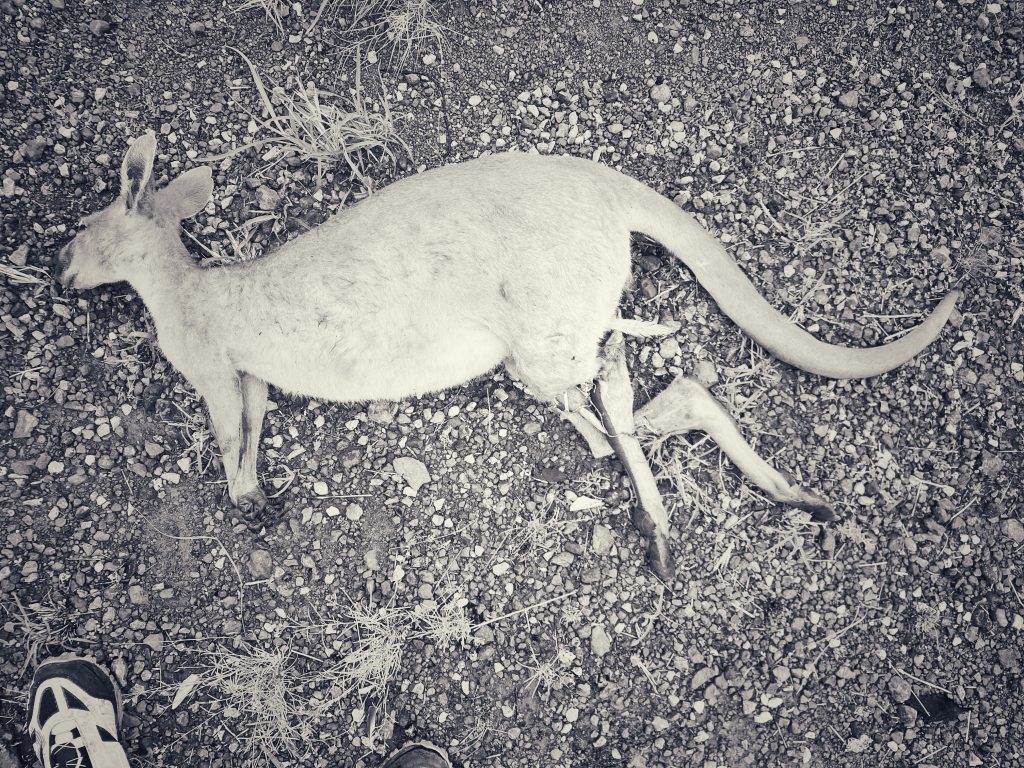
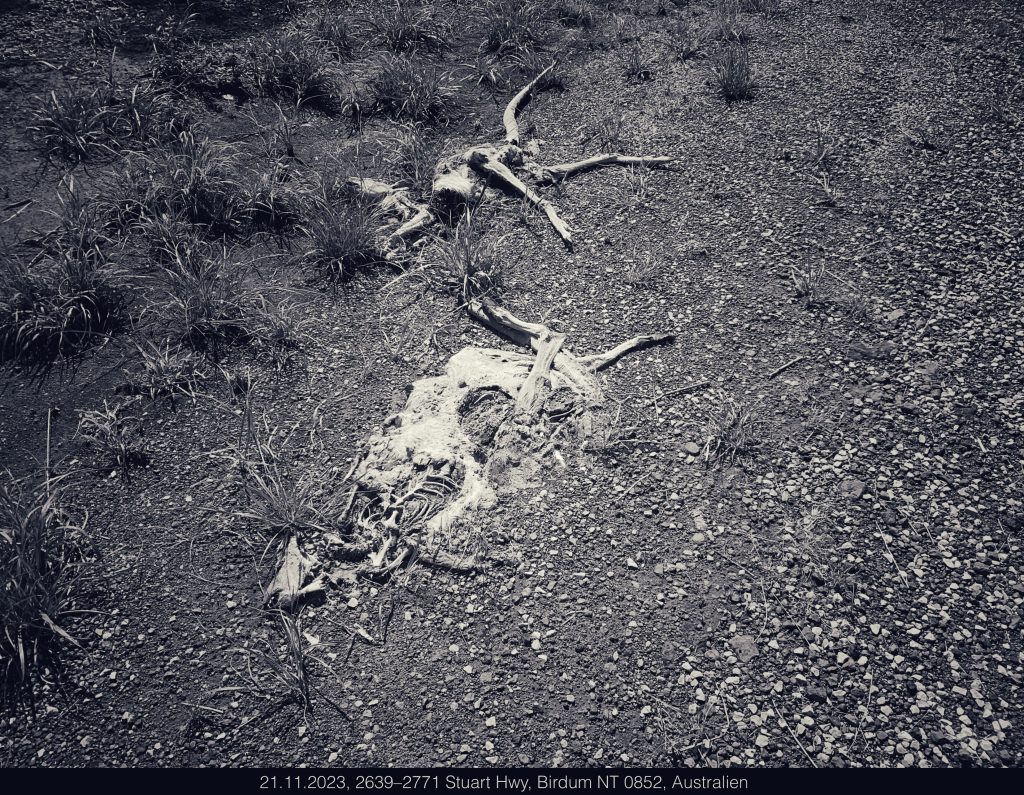
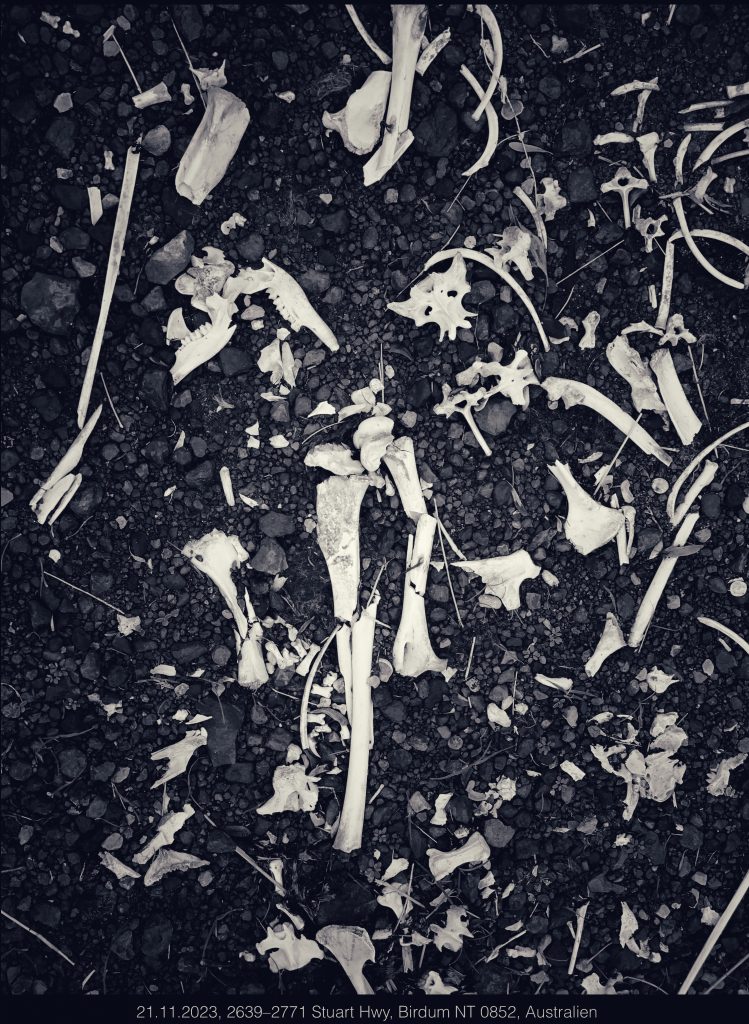
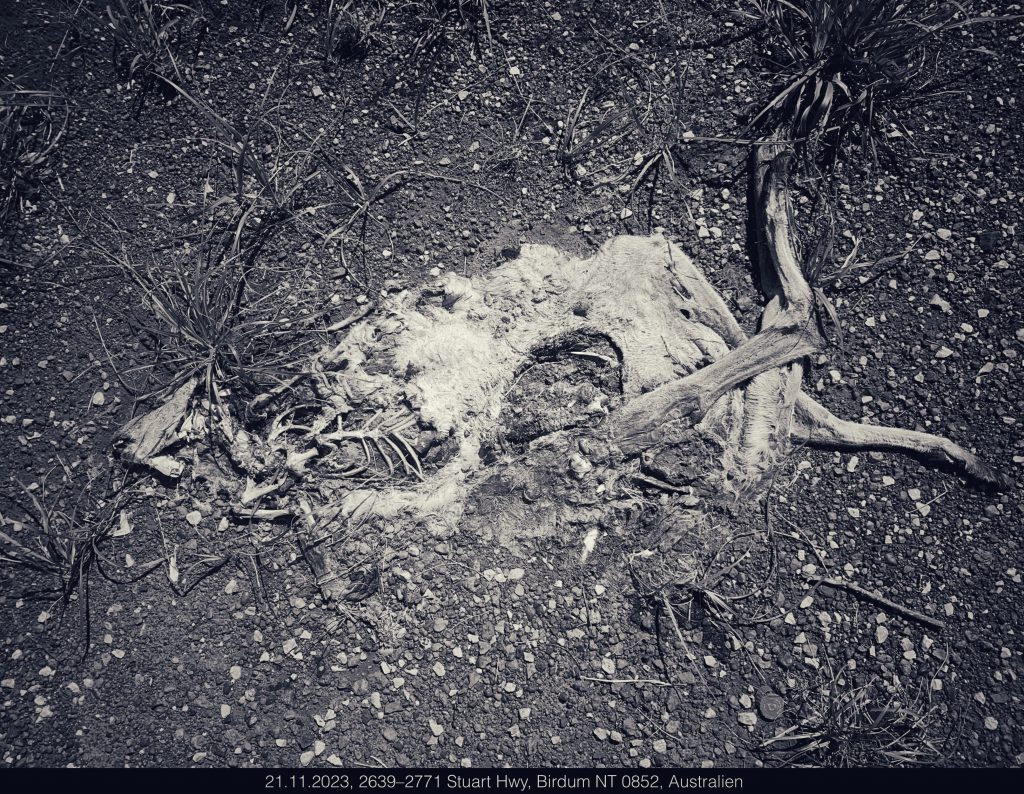


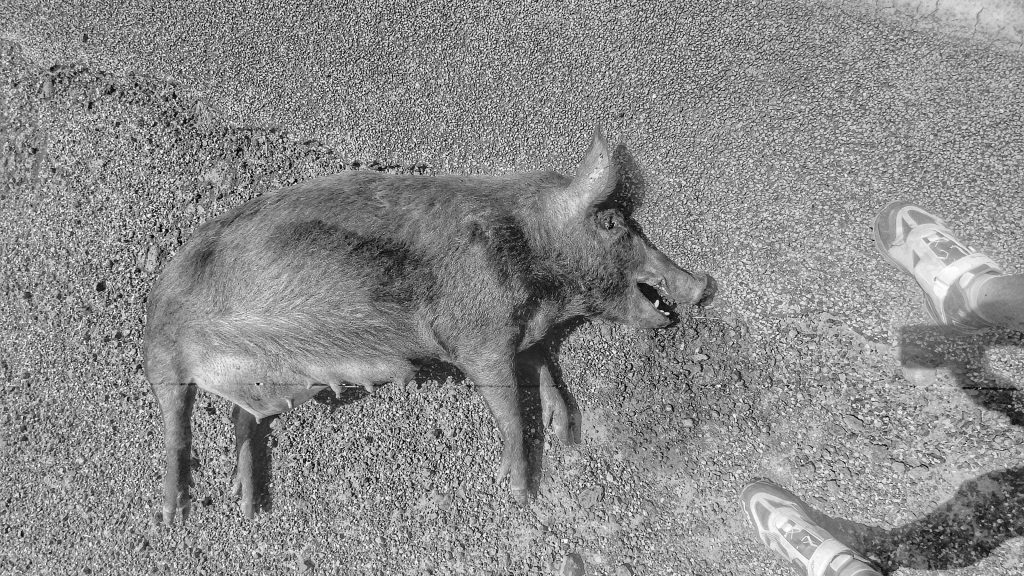


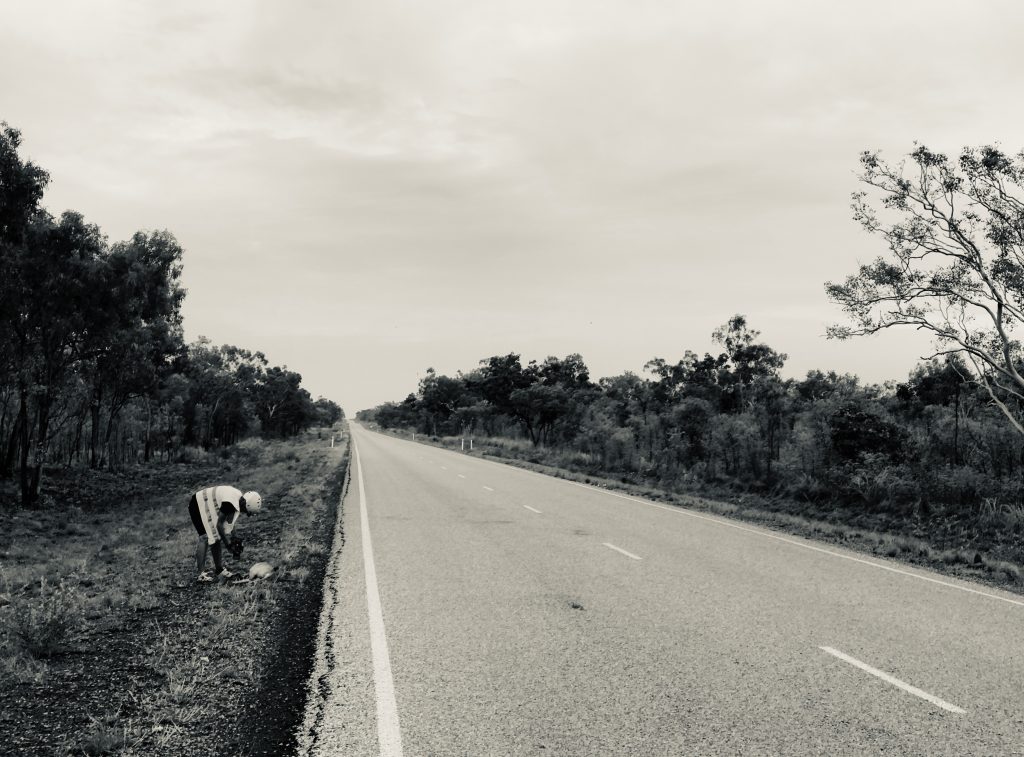

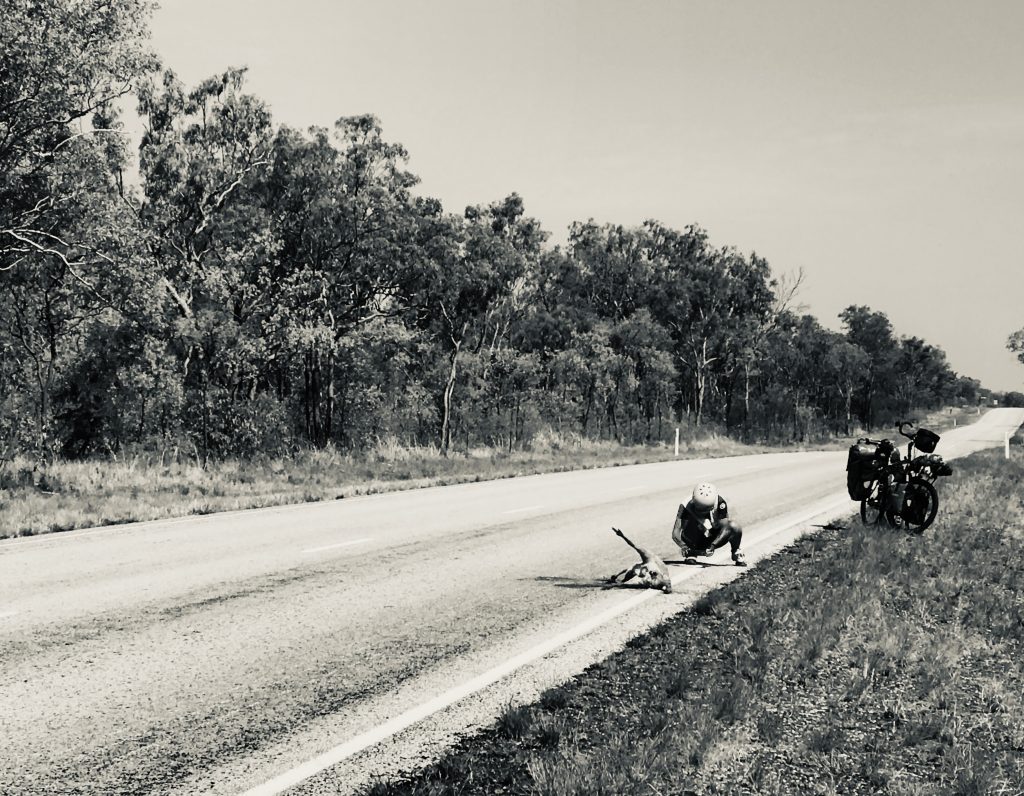
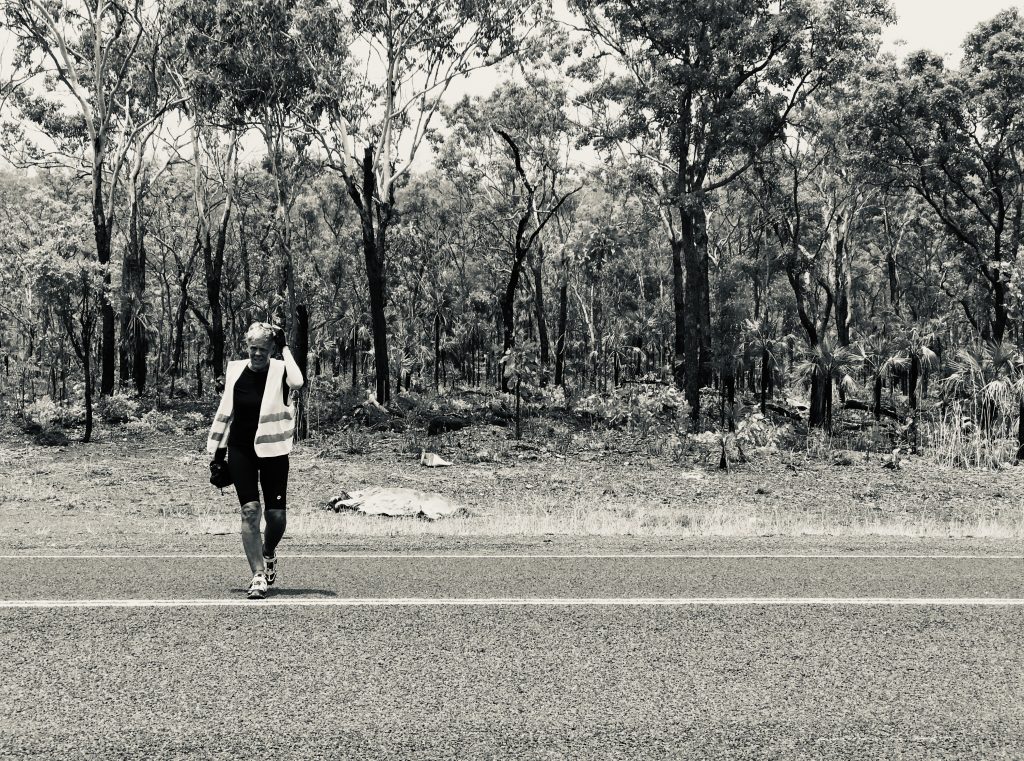





By the way, eating kangaroo meat is nothing really special here
Just like game in Europe. It probably tastes a bit like veal, a fellow cyclist told us. Unfortunately, all the dead kangaroos are left lying on the road. In Germany, we simply don’t see dead game very often. In the event of damage caused by game, if you want to be reimbursed by the insurance company, you have to report it and receive a game damage certificate to present. Foresters, for example, take these animals with them and of course they end up in the cooking pot.

But there is another speciality here with the kangaroos. Because their numbers have increased dramatically, Australians have been encouraged to eat more kangaroo meat. Well, they don’t. It was traditionally the meat of the poor. So the vast majority of kangaroo meat ends up in tins or shrink-wrapped as giant bones for dog food in the shops. Incidentally, Germans are among the biggest lovers of kangaroo meat. The export is huge.
And then there are also the “Kangarootarian”. They only eat kangaroo meat. Farmed in a species-appropriate manner and killed “humanely” – much healthier than other red meat – and also a big hit environmentally compared to cattle or sheep. I’m still out eating any meat and won’t for sure become a Kangarootarian.
“Ostralien” – “Ostralia”
I was probably still quite small when I painted this picture of “Ostralien”, but already then I was so enthusiastic about kangaroos. You can clearly see the sketch of such an animal on the right-hand margin. So how could I eat even one of them?
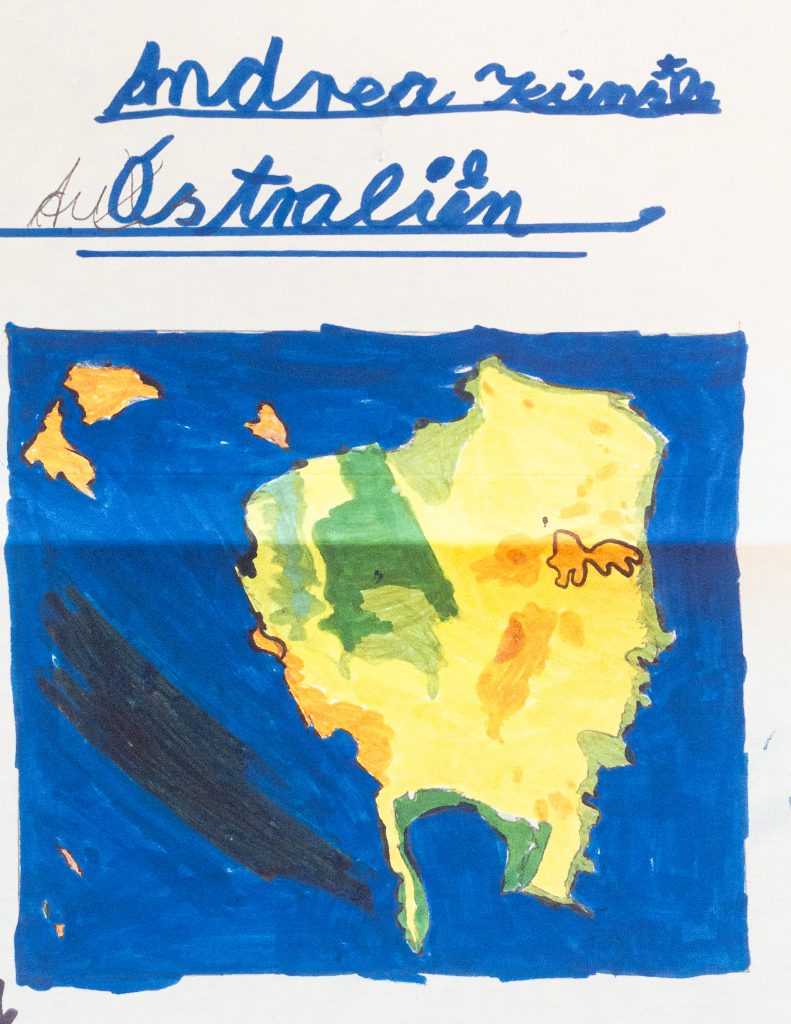
I’m writing this post from Germany
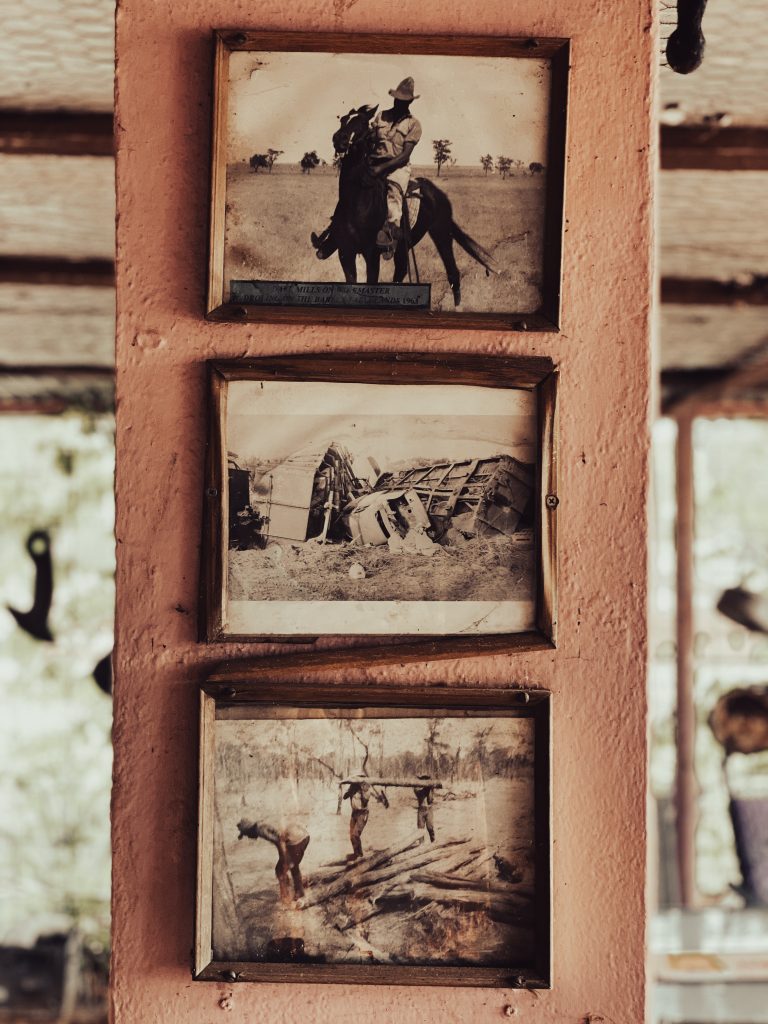
We are spending Christmas in Germany with my parents, not here in the Outback. Not because of Christmas, but rather to support them a little with their health challenges.
After starting from Darwin on the Stuart Highway, we cycled via Pine Creek, Katherine, Mataranka, Larrimah, Daly Waters, Dunmarra to Tennant Creek, waited for a greyhound Bus to Townsville. We did spend a night in a petrol station and after a 26-hour bus journey and a total flight time of 25 hours, we are back in Germany. We were faced with a temperature difference of 40 degrees and our clothes weren’t really what you should be wearing at -5 degrees. But we survived. We left our equipment safely with fellow cyclists in Townsville.
So for Christmas I have a small quiz for you: Which three of these photos are from Australia and which one from Germany?
Wish you some wonderful days in this Christmas time.
And with this last picture I wish all our friends on this wonderful planet some wonderful days in this Christmas time with their friends, partners, families and animals. Stay safe.
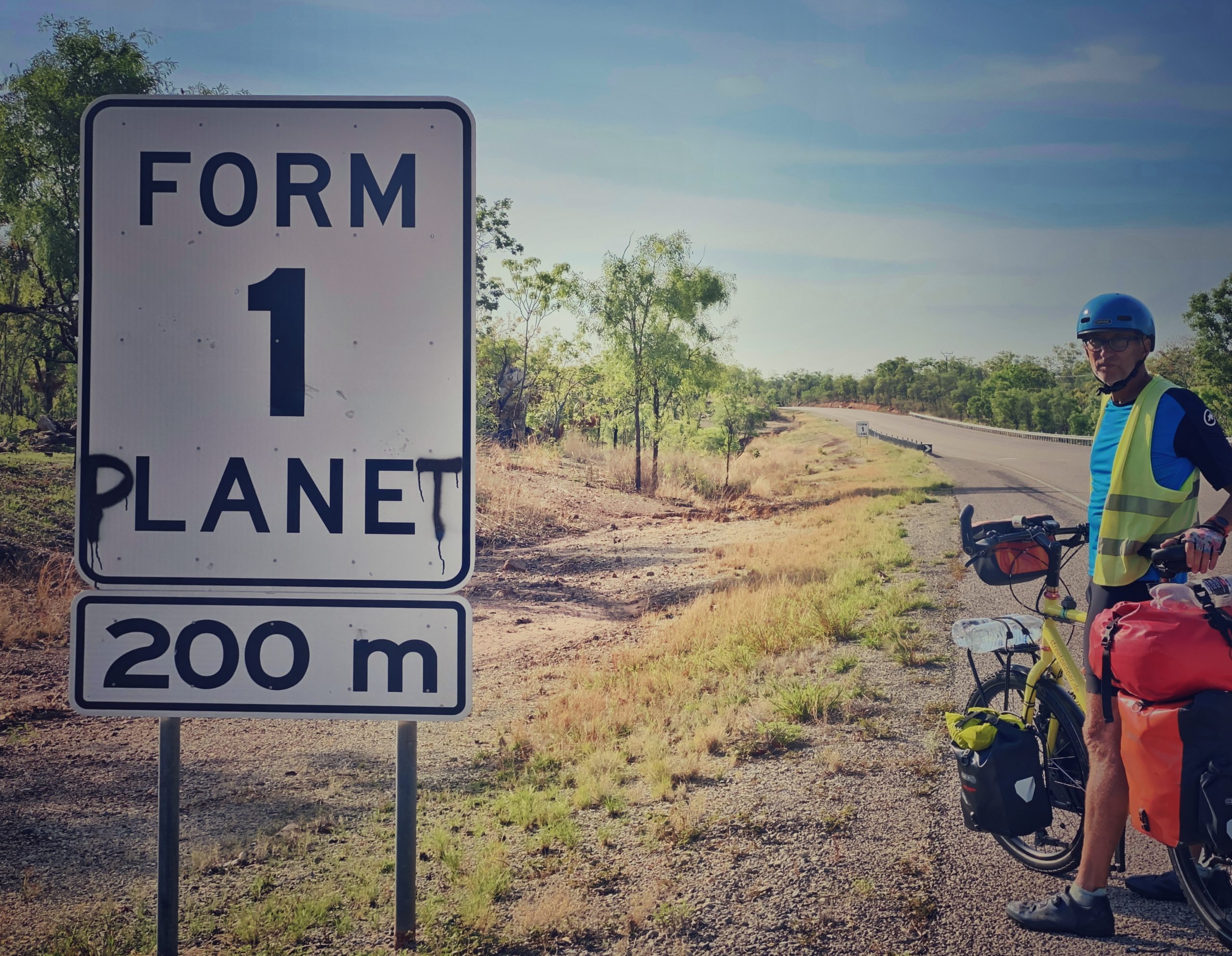

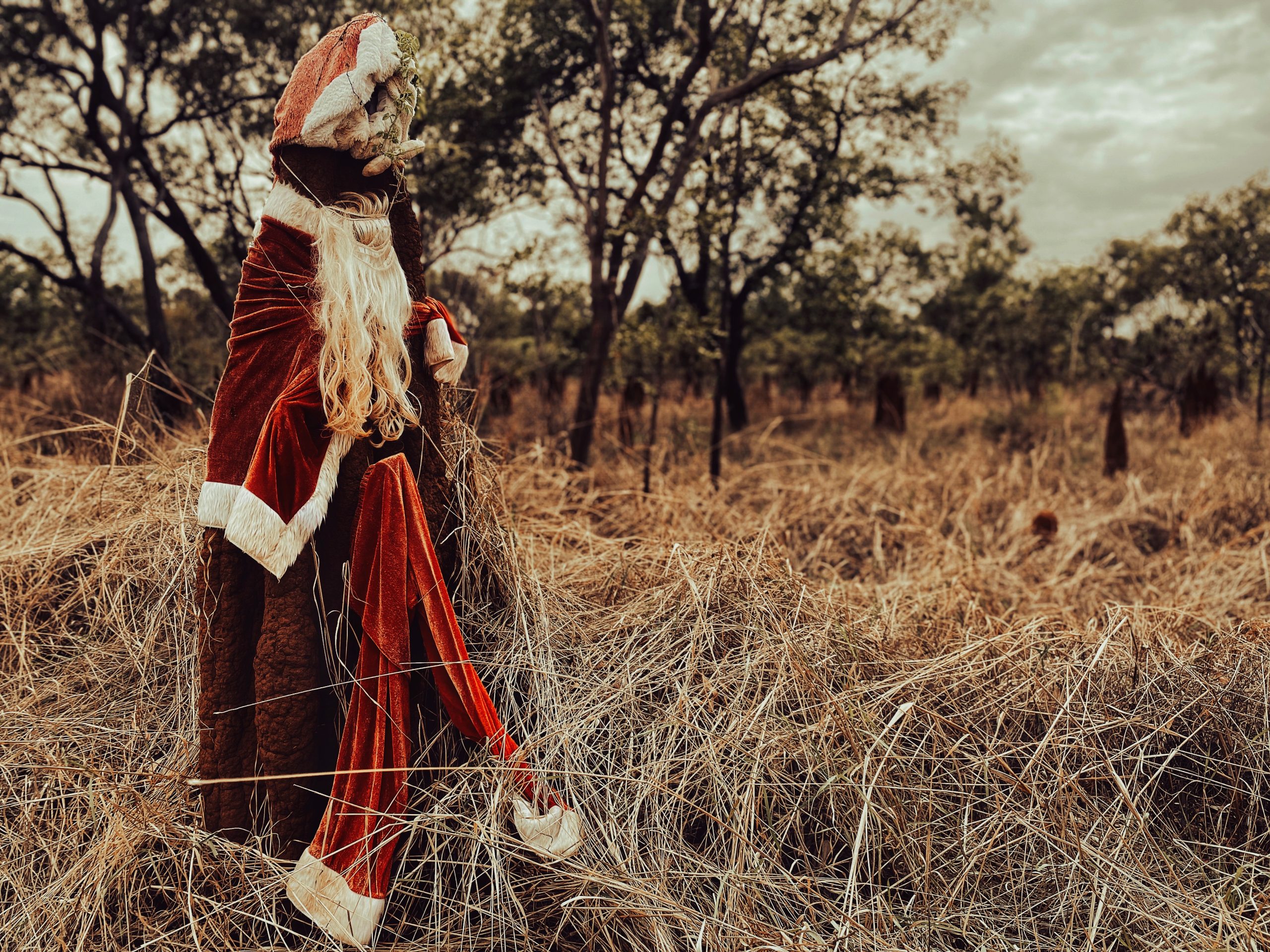
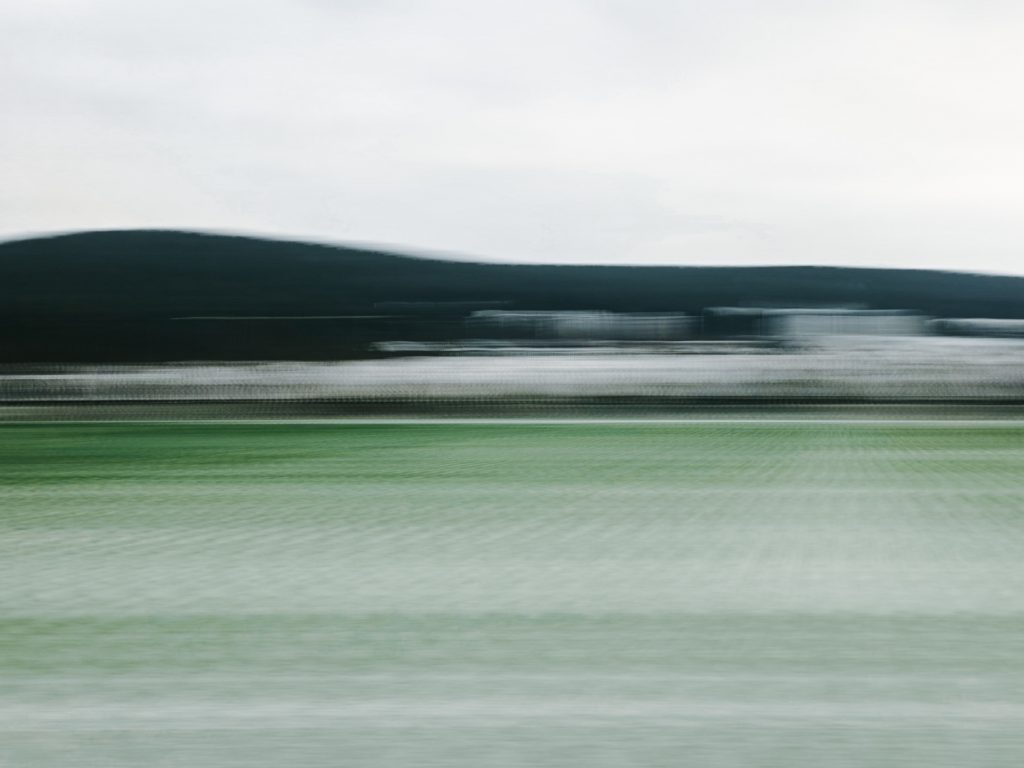


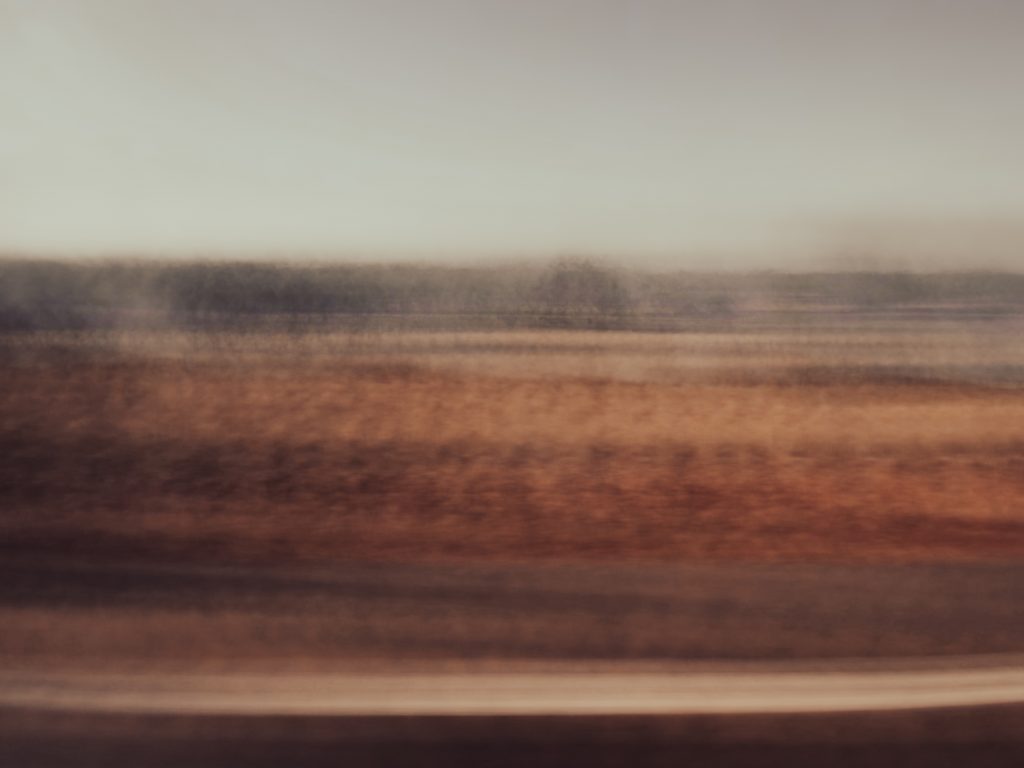

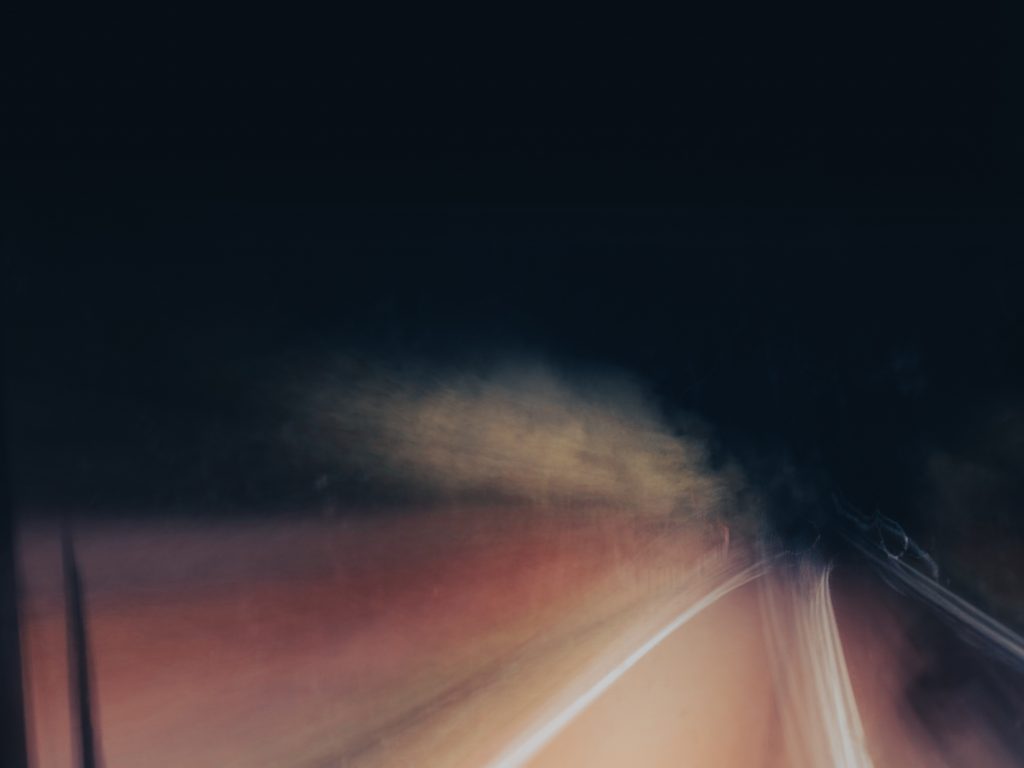
1 thought on “Hohoho – Father Christmas and a territory postcard”
Comments are closed.